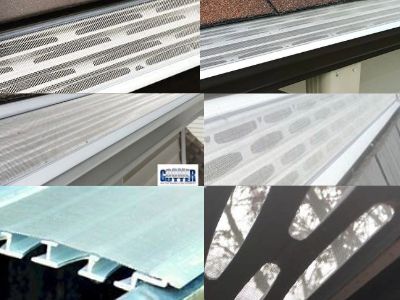Understanding the Benefits and Drawbacks of Installing Gutter Covers
- Thomas Szkutak

- Jul 11
- 4 min read
When thinking about home improvements, installing gutter covers might not be the first consideration. However, for homeowners dealing with frequent gutter maintenance, the idea of gutter covers can be very attractive. Gutter covers, or guards, are designed to prevent debris from entering your gutters, ensuring water flows seamlessly and cutting down the need for regular cleaning.
In this blog post, we will explore the pros and cons of installing gutter covers to help you determine whether they are the right choice for your home.
The Benefits of Gutter Covers
1. Reduced Cleaning and Maintenance
One of the key advantages of gutter covers is the significant reduction in cleaning and maintenance. Traditional gutters easily become clogged with leaves, twigs, and other debris. This not only leads to water overflow but can also cause serious damage to your home’s foundation or roof. For instance, homes with clogged gutters can experience damage costs averaging between $1,000 to $5,000.
By installing gutter covers, you create a barrier that keeps larger debris out while allowing water to flow through. This can lead to significant time savings. Homeowners who switch to gutter covers report needing to clean their gutter systems only once a year, compared to 3 to 4 times annually without them.
2. Longer Lifespan for Gutters
Gutter covers can also extend the lifespan of your gutters. When gutters are overwhelmed with debris, they become heavy and may sag over time. For instance, metal gutters exposed to excessive moisture can rust and deteriorate in as little as 5 years if neglected.
With gutter covers installed, you reduce the likelihood of damage caused by clogged gutters. Keeping them clear allows for proper drainage, which can extend the lifespan of your gutters by up to 15 years, providing significant long-term savings.
3. Preventing Pests
Clogged gutters often turn into breeding grounds for pests like mosquitoes, rodents, and insects. With stagnant water and debris, your home’s exterior becomes an attractive habitat for these unwanted guests.
Gutter covers help address this issue by keeping gutters dry. For example, homes with effective gutter covers report a 50% decrease in pest-related issues. This means you can enjoy your outdoor spaces without worrying about pest infestations.

4. Aesthetic Appeal
Gutter covers come in various styles and colors, providing options that match your home’s design. A well-installed gutter cover can enhance the overall look of your home, creating a more polished appearance for your roofline.
Instead of facing unsightly and dirty gutters, your home appears well-maintained and sophisticated with the right gutter covers, making them a worthwhile investment.
The Drawbacks of Gutter Covers
1. Initial Cost
While gutter covers can save you money in the long run by reducing maintenance and repairs, the initial investment can be a concern for many homeowners. Depending on the type of gutter cover you choose and your home's size, the installation can run anywhere from $200 to over $1,000.
Moreover, if you require professional installation, this can further increase your initial expense. It is crucial to evaluate these upfront costs against the potential long-term savings you could enjoy.
2. Potential for Ice Dams
In colder climates, gutter covers can sometimes contribute to the formation of ice dams. Without adequate airflow, gutters may retain moisture during winter, which can lead to freezing, causing damaging ice dams.
Ice dams can result in repair costs averaging between $500 and $2,000 if not addressed swiftly. Homeowners in colder areas should seriously consider this factor when deciding whether to install gutter guards.
3. Not a Complete Solution
While gutter covers significantly reduce debris accumulation, they do not eliminate the need for occasional cleaning entirely. Smaller particles, like dust and sand, can still find their way into gutters, eventually necessitating maintenance.
Homeowners should be prepared for the possibility of performing minor cleanings, despite the reduced frequency achieved with gutter covers.
Choosing the Right Gutter Covers
When considering gutter covers, it is important to select the right type for your home. There are several options available, including mesh screens, foam inserts, and solid covers, each presenting unique benefits and potential downsides.
1. Mesh Screens
These screens prevent larger debris from entering while allowing water to flow freely. They are generally easy to install and clean but may require you to remove fine debris that can accumulate on top every few months.
2. Foam Inserts
Foam gutter inserts fit directly into the gutters and allow for water flow while blocking debris. They are very effective at preventing clogs but may need replacement every few years due to wear.
3. Solid Covers
Solid gutter covers offer maximum protection from debris but may require professional installation. They can also be more expensive compared to other options, though their durability and efficiency can justify the cost.

Making an Informed Decision
Installing gutter covers can provide many advantages, including reduced maintenance and a longer lifespan for your gutters. However, they also come with certain downsides, such as initial costs and the potential for ice dam formation.
Ultimately, your choice should reflect your specific needs, budget, and local climate. By carefully weighing both the pros and cons, you can make a well-informed decision that enhances your home’s functionality while protecting it from water damage.
Before you decide, consider consulting a professional who can evaluate your home and recommend the best gutter cover solution tailored to your situation.



Comments